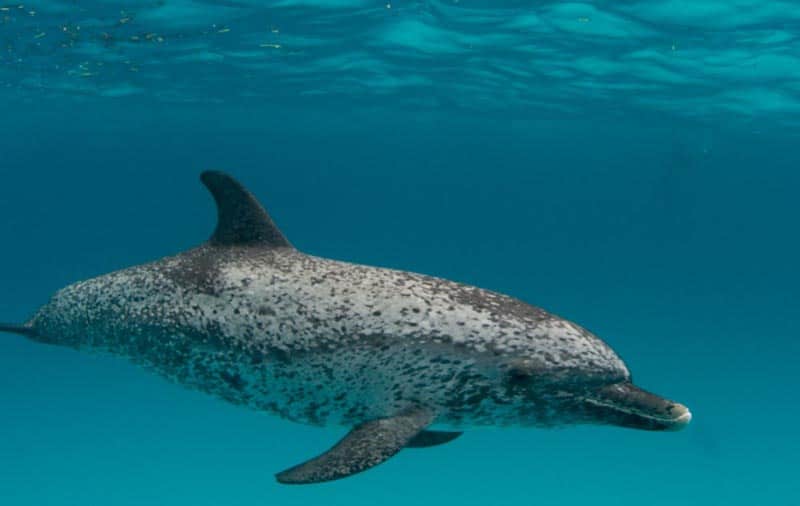
Atlantic Spotted Dolphin Facts
- The Atlantic Spotted Dolphin is a comparatively large species of dolphin. Quite understandably, its name derives from its distinctive mottled coloring. Also, this species was first identified in 1828.
- Pronounced variations in coloring, size, and physical shape occurs between individual specimens.
- Further, its outgoing behavior towards humans has earned it a reputation as one of the friendliest species in any ocean. The animal often follows pleasure craft, seeming to enjoy the company.
- In addition, the species enjoys following commercial fishing vessels, to prey upon discarded fish. This does, however, result in its occasionally being netted themselves.
- Finally, intentional hunting of the dolphin is thankfully no longer legal. The remarkable animal received official protection in 1972.
Related Articles
Atlantic Spotted Dolphin Physical Description
The coloring of the Atlantic Spotted Dolphin changes dramatically as the individual matures. Yet, calves are born almost uniformly gray. Further, the species does not display a noticeable degree of sexual dimorphism.
Meanwhile, once weaned, the animal begins to develop the characteristic spots. As it matures, the spots also become darker, denser, and widespread. Elderly specimens will even appear to be black with white spots.
Adults attain an average length of about 7.6 ft (2.3 m). Also, the mammal remains popular for possessing a somewhat chunky body type. Further, an average weight for an adult is roughly 310 lb (140 kg).
- Kingdom: Animalia
- Phylum: Chordata
- Class: Mammalia
- Order: Artiodactyla
- Family: Cetacea
- Genus: Stenella
- Species: S. frontalis
Atlantic Spotted Dolphin Distribution, Habitat, and Ecology
First of all, the beautiful Atlantic Spotted Dolphin has a highly specific and particular habitat. That’s because it typically only lives the warm and tropical waters along the continental shelf of the Atlantic Ocean.
Furthermore, it primarily inhabits a zone ranging in depth from 65-820 ft (20-250 m). But, it can and occasionally does visit significantly deeper waters. This occurs if the scarcity of prey necessitates it.
The mammal also generally travels in groups known as pods which typically range in number from 5-15 individuals. However, larger pods may form temporarily in regions where food is plentiful.
In conclusion, individuals primarily prey upon small fish, invertebrates, and small cephalopods.
Species Sharing Its Range
Check out our other articles on Earth’s Geothermal Marvels, Wallace’s Giant Bee, Rose of Jericho, Sicily, Bee Hummingbird, Brazilian Wandering Spider, Cantor’s Giant Softshell Turtle
